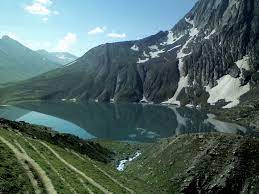Introduction
Nestled in the lap of the Himalayas, the Kashmir Valley is renowned for its breathtaking landscapes, lush meadows, and pristine lakes. Among the many trekking destinations in India, the Kashmir Great Lakes Trek stands out as a journey through paradise on Earth. With its dramatic scenery, serene lakes, and challenging trails, this trek offers a unique experience for nature enthusiasts, adventure seekers, and those looking to connect with the grandeur of the mountains.
Route and Itinerary
The Kashmir Great Lakes Trek is a moderate to challenging trek that covers approximately 70-75 kilometers over a span of 7 to 9 days, depending on the specific itinerary chosen by trekkers. The typical trail begins in the picturesque village of Sonamarg and winds its way through enchanting meadows, dense pine forests, and high mountain passes, reaching an altitude of around 13,750 feet at the highest point, the Gadsar Pass.
Day 1: Sonamarg to Nichnai (11,500 ft)
The journey commences from Sonamarg, also known as the “Meadow of Gold.” The initial stretch involves a gradual ascent through lush green meadows and dense forests, leading to the Nichnai campsite. The trail offers stunning views of the surrounding mountains and a preview of the breathtaking landscapes that await.
Day 2: Nichnai to Vishansar Lake (12,000 ft)
The trail continues through alpine meadows and gradually opens up to reveal the Vishansar Valley. The highlight of this day is the awe-inspiring Vishansar Lake, surrounded by snow-capped peaks and pristine beauty. The campsite by the lake is a perfect spot to soak in the tranquility of the surroundings.
Day 3: Acclimatization at Vishansar
Taking a day to acclimatize is crucial at high altitudes. Trekkers can explore the area around Vishansar Lake, enjoy the breathtaking scenery, and prepare for the days ahead.
Day 4: Vishansar to Gadsar Lake (12,000 ft)
This leg of the trek takes trekkers to the mesmerizing Gadsar Lake, which lies hidden amidst mountains and offers a surreal view. The trail passes through meadows, boulder fields, and a steep ascent to the Gadsar Pass, revealing a panoramic view of the surrounding peaks.
Day 5: Gadsar to Satsar Lakes (12,000 ft)
The trail continues through rocky terrain and meadows, leading to a series of seven interconnected Satsar Lakes. Each lake has its own unique charm, reflecting the surrounding landscapes like mirrors.
Day 6: Going from Satsar to Gangbal Lakes (at 11,500 ft)
The trek takes trekkers through steep ascents and descents, across meadows and rocky terrain, finally reaching the enchanting Gangbal Twin Lakes. These high-altitude lakes are surrounded by lush green meadows and offer a perfect setting for relaxation.
Day 7: Gangbal to Naranag (7,450 ft)
The final leg of the trek takes trekkers downhill, through pine forests and charming villages, before reaching Naranag. This historical site boasts ancient temples and marks the end of the incredible journey through the Kashmir Great Lakes.
Natural Splendors and Cultural Delights
The Kashmir Great Lakes Trek is not just about the physical challenge; it’s also an opportunity to immerse oneself in the rich cultural heritage of the region. The trek passes through remote villages where trekkers can interact with the friendly locals and learn about their way of life. Trekkers will also be captivated by the region’s diverse flora and fauna, including vibrant wildflowers, grazing horses, and occasional sightings of rare wildlife such as the Himalayan brown bear and the snow leopard.
Challenges and Preparations
While the Kashmir Great Lakes Trek is undoubtedly a rewarding experience, it’s important to be well-prepared for the challenges that lie ahead. Trekkers should be physically fit and mentally prepared to handle varying weather conditions, high altitudes, and long hours of walking. Adequate acclimatization and a gradual increase in altitude are essential to prevent altitude sickness. It’s recommended to undertake cardiovascular exercises and strength training before embarking on the trek to build stamina and endurance.
Packing essentials include comfortable trekking gear, appropriate clothing for varying temperatures, sturdy trekking shoes, a sleeping bag, and a trekking pole. Carrying a first aid kit, sufficient water, and high-energy snacks is crucial for ensuring a safe and enjoyable journey.
Preserving the Pristine Beauty
As the Kashmir Great Lakes Trek gains popularity, it’s essential for trekkers to maintain responsible trekking practices to preserve the pristine beauty of the region. Adhering to “Leave No Trace” principles by not littering, respecting local customs, and avoiding damage to the environment is crucial for the sustainability of this natural paradise.
Conclusion
The Kashmir Great Lakes Trek offers an unforgettable journey through some of the most captivating landscapes in the world. From serene lakes to towering peaks, from verdant meadows to ancient temples, the trek encompasses the grandeur of nature and the richness of culture. As trekkers traverse through the heart of the Himalayas, they not only challenge themselves physically but also create lasting memories and a deep connection with the beauty that lies within the paradise known as Kashmir.

